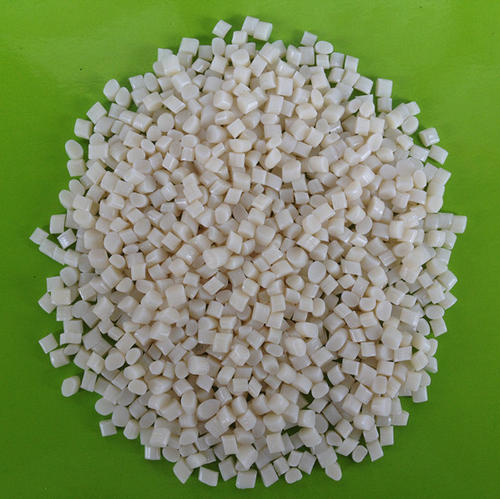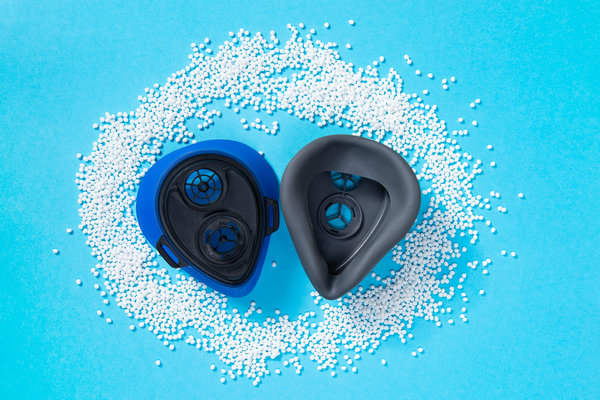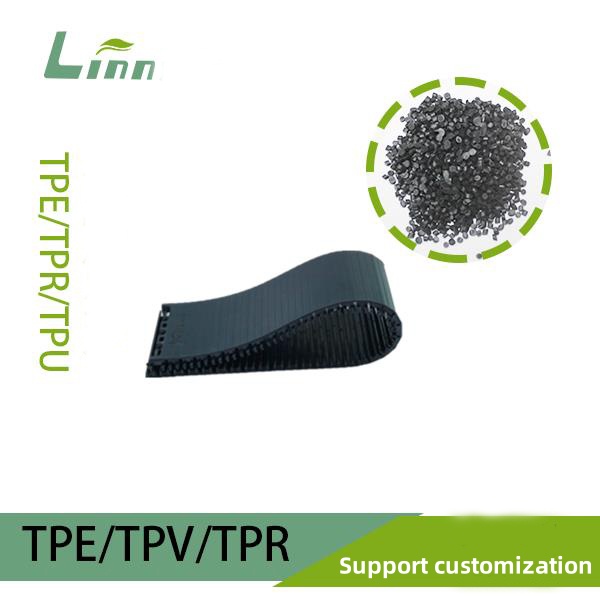Thermoplastic Elastomers (TPEs) are like the alchemists’ dream of modern materials science—blending the stretchy magic of rubber with the moldable ease of plastic. As someone who’s spent years knee-deep in polymer production, I’ve marveled at how TPEs transform into everything from soft phone cases to durable car seals. But what exactly goes into these versatile materials? Understanding the components of TPE raw materials is like peering under the hood of a high-performance engine—it reveals the ingenuity behind their flexibility and strength. This article dives into the ingredients that make TPEs tick, offering practical insights and real-world context for anyone curious about what makes these materials so special.

Understanding the User’s Intent
When someone searches for “components of TPE raw materials,” they’re likely a product designer, engineer, or manufacturer seeking clarity on what TPEs are made of. They might be selecting materials for a new project, troubleshooting formulation issues, or ensuring compliance with regulations. Their core need? A detailed, trustworthy breakdown of TPE ingredients, including their roles and variations, to make informed decisions. They’re not looking for vague overviews—they want specifics, grounded in expertise, with practical examples to guide their choices. With this in mind, let’s explore the building blocks of TPEs, weaving in personal insights and industry know-how to bring the topic to life.
What Are TPEs? A Quick Refresher
Picture TPEs as a material that dances between two worlds: the elasticity of rubber and the processability of thermoplastics. They’re used in countless products, from medical tubing to shoe soles, because they can be molded, stretched, and recycled with ease. But their magic lies in their composition—a carefully balanced mix of polymers, fillers, and additives that work together like a symphony. Let’s break down the key components that give TPEs their unique properties.
Core Components of TPE Raw Materials
1. Base Polymers: The Heart of TPEs
At the core of every TPE is a base polymer, the backbone that defines its structure and behavior. Think of it as the foundation of a house—everything else builds on it. TPEs come in several types, each with a distinct polymer base:
Styrenic Block Copolymers (SBCs): These, like styrene-butadiene-styrene (SBS) or styrene-ethylene-butylene-styrene (SEBS), are the most common TPEs. They offer a balance of elasticity and strength, perfect for soft-touch grips or seals. I’ve seen SEBS used in medical devices because it’s tough yet gentle on skin.
Thermoplastic Polyurethanes (TPUs): TPUs bring durability and abrasion resistance, making them ideal for rugged applications like shoe soles or industrial belts. In one factory I worked at, TPUs were the go-to for heavy-duty conveyor components.
Thermoplastic Polyolefins (TPOs): These blend polypropylene with elastomers, offering stiffness and flexibility. They’re a staple in automotive parts like bumpers.
Copolyester Elastomers (COPEs): Known for heat resistance, COPEs shine in high-temperature environments like under-the-hood car parts.
Thermoplastic Vulcanizates (TPVs): These combine rubber and plastic through dynamic vulcanization, giving excellent resilience for weather seals.
Polyamide Elastomers (PEBAs): Lightweight and flexible, PEBAs are used in sports equipment and medical tubing for their strength and comfort.
Each base polymer sets the stage for the TPE’s performance, tailored to specific needs like softness, durability, or heat resistance.
2. Plasticizers: The Flexibility Boosters
Plasticizers are like the yoga instructors of TPEs—they make the material more pliable and soft. These oils or low-molecular-weight compounds reduce hardness and enhance elasticity.
Types of Plasticizers: Common ones include mineral oils (for SBCs), phthalates, or bio-based options like vegetable oils. In a plant I visited, switching to bio-based plasticizers helped a client meet eco-friendly standards without sacrificing performance.
Role in TPEs: Plasticizers lower the glass transition temperature, making TPEs softer and more flexible. They’re critical for applications like soft grips or flexible tubing.
Considerations: Too much plasticizer can make TPEs feel greasy or reduce strength, so balance is key. Regulatory restrictions on phthalates in medical or food-contact applications also influence choices.

3. Fillers: The Cost and Strength Modifiers
Fillers are the unsung heroes of TPEs, tweaking cost, weight, and mechanical properties. They’re like spices in a recipe—small amounts make a big difference.
Common Fillers:
Calcium Carbonate: Cheap and abundant, it reduces costs and adds stiffness. I’ve seen it used in TPE packaging to cut expenses without compromising quality.
Talc: Boosts stiffness and heat resistance, ideal for automotive parts.
Glass Fibers: Add strength for high-performance applications like industrial seals.
Carbon Black: Enhances UV resistance and adds color, common in outdoor TPE products.
Impact: Fillers can lower material costs by up to 30% in some cases, but overdoing it can reduce elasticity. It’s a balancing act I’ve watched engineers perfect through trial and error.
Sustainability Note: Some fillers, like recycled glass or bio-based fibers, align with green initiatives, a growing trend in the industry.
4. Additives: The Special Sauce
Additives are the magic dust that fine-tunes TPEs for specific jobs. They’re like the toppings on a pizza, turning a basic material into something extraordinary.
Stabilizers: UV stabilizers and antioxidants protect TPEs from sun, heat, or oxidation. I recall a project where UV stabilizers saved outdoor TPE seals from cracking after years in the sun.
Flame Retardants: Essential for electronics or automotive parts, these reduce fire risk. Halogen-free options are gaining traction for safety and environmental reasons.
Colorants: Pigments or dyes give TPEs vibrant or transparent looks. A client once insisted on a neon-green TPE for a toy line—it was a hit with kids!
Processing Aids: These improve flow during molding, reducing defects. They’re a lifesaver in high-speed production lines.
Antimicrobial Agents: For medical or consumer goods, these prevent bacterial growth, adding a layer of safety.
5. Reinforcing Agents: The Muscle Builders
For TPEs needing extra strength, reinforcing agents like fibers or nanomaterials step in. They’re like adding steel beams to a building.
Glass or Carbon Fibers: Boost tensile strength for heavy-duty applications. I’ve seen glass-reinforced TPUs used in rugged tool handles.
Nanoclays: Improve stiffness and barrier properties, ideal for packaging.
Impact: These agents make TPEs tougher but can reduce flexibility, so they’re used sparingly for specific needs.
6. Compatibilizers: The Glue That Binds
When blending different polymers or fillers, compatibilizers ensure everything plays nice together. They’re like mediators in a team meeting, preventing phase separation.
Common Types: Maleic anhydride-grafted polymers are often used to bond dissimilar materials.
Role: They improve the uniformity and strength of TPE blends, especially in TPOs or TPVs. I’ve seen compatibilizers rescue a batch of TPE that was separating during extrusion.

TPE Component Breakdown
Here’s a quick table summarizing the main components of TPE raw materials for easy reference:
|
Component |
Role |
Examples |
Key Benefit |
|---|---|---|---|
|
Base Polymers |
Provide structure and elasticity |
SBS, TPU, TPO, COPE, TPV, PEBA |
Defines TPE type and performance |
|
Plasticizers |
Enhance flexibility and softness |
Mineral oils, phthalates |
Makes TPEs pliable for soft-touch |
|
Fillers |
Reduce cost, add stiffness/strength |
Calcium carbonate, talc, glass |
Balances cost and performance |
|
Additives |
Customize properties (color, UV, etc.) |
Stabilizers, colorants, flame retardants |
Tailors TPE for specific uses |
This table is your go-to cheat sheet for understanding what’s inside TPEs and why it matters.
A Personal Reflection: The Art of TPE Formulation
I’ll never forget my first time working on a TPE formulation. We were tasked with creating a soft, durable grip for a medical device. The client wanted it flexible yet tough, with a specific shade of blue. Mixing the right base polymer (SEBS), plasticizer (mineral oil), and colorant felt like crafting a recipe for the perfect cake. Too much plasticizer, and it was too soft; too little, and it felt like plastic. Getting it right was a thrill, and seeing the final product in hospitals was a proud moment. TPE formulation is as much art as science, requiring a deep understanding of each component’s role.
Variations Across TPE Types
Not all TPEs are created equal. Each type has a unique recipe:
SBCs: Heavy on plasticizers (up to 50% by weight) for softness, with minimal fillers for flexibility.
TPUs: Often use fewer plasticizers but more reinforcing agents for durability.
TPOs: Blend polypropylene with elastomers, using fillers like talc to boost stiffness.
TPVs: Include cross-linked rubber particles, reducing the need for plasticizers but requiring compatibilizers.
COPEs and PEBAs: Rely on specialized polymers with minimal additives for high-performance niches.
Choosing the right mix depends on the application, budget, and performance needs. I’ve seen engineers spend weeks tweaking formulations to hit the sweet spot.
Regulatory and Safety Considerations
TPE components must comply with regulations, especially for medical, food-contact, or toy applications. For example:
Phthalate-Free Plasticizers: Required for medical or children’s products under regulations like REACH or FDA guidelines.
Biocompatibility: TPUs and PEBAs often meet USP Class VI standards for medical use.
Environmental Impact: Bio-based plasticizers and recyclable fillers align with sustainability goals, a growing priority in the industry.
Always check Material Safety Data Sheets (MSDS) and consult suppliers to ensure compliance. I’ve seen projects delayed because a non-compliant additive slipped through—don’t let that happen to you.

Challenges in TPE Composition
Formulating TPEs isn’t without hiccups. Too much plasticizer can cause oil bleed, making products feel greasy. Overloading fillers can reduce elasticity, turning a TPE into a stiff plastic. And some additives, like flame retardants, can clash with recyclability goals. Balance is everything. I’ve watched teams wrestle with these trade-offs, learning that close collaboration with suppliers and rigorous testing are key to success.
Real-World Applications: Where Components Shine
The beauty of TPE components comes alive in their applications:
Medical Devices: Biocompatible TPUs with minimal plasticizers ensure safe, flexible tubing.
Automotive: TPOs with talc fillers create lightweight, durable bumpers.
Consumer Goods: SBCs with vibrant colorants make eye-catching phone cases.
Industrial: TPVs with stabilizers withstand harsh outdoor conditions in seals.
Each component plays a starring role, tailored to the product’s needs.
Why Understanding Components Matters
Knowing what’s in TPEs isn’t just academic—it’s practical. It helps you choose the right material, optimize costs, and meet regulatory or environmental goals. Whether you’re designing a new product or troubleshooting a production issue, understanding these ingredients empowers you to make smart decisions. It’s like having the recipe for a perfect dish—you can tweak it to suit any taste.

Frequently Asked Questions (FAQs)
Q: Are all TPEs made with the same components?
No, different TPE types (like SBCs, TPUs, or TPOs) use unique combinations of base polymers, plasticizers, fillers, and additives tailored to their applications.
Q: Are TPE components safe for food or medical use?
Many are, but it depends on the formulation. Use phthalate-free plasticizers and biocompatible polymers (like certain TPUs) for food or medical applications, and always verify with MSDS.
Q: How do plasticizers affect TPE performance?
They make TPEs softer and more flexible but can reduce strength if overused. The right balance is critical for performance and feel.
Q: Can TPEs be made eco-friendly?
Yes, bio-based plasticizers, recyclable fillers, and sustainable polymers make TPEs greener. Some formulations even use renewable sources like sugarcane.
Q: How do I choose the right TPE formulation?
Work with suppliers to match the base polymer and additives to your needs—consider hardness, durability, and regulatory requirements. Testing is key!
Final Thoughts
TPEs are a marvel of modern materials, blending base polymers, plasticizers, fillers, additives, reinforcing agents, and compatibilizers into a versatile, high-performance package. As someone who’s seen TPEs transform products and processes, I’m endlessly fascinated by their potential. Understanding their components isn’t just about chemistry—it’s about unlocking possibilities for innovation, sustainability, and efficiency. Whether you’re crafting a new product or optimizing a production line, knowing what’s inside TPEs is your ticket to success. Dive in, experiment, and let these materials work their magic.





